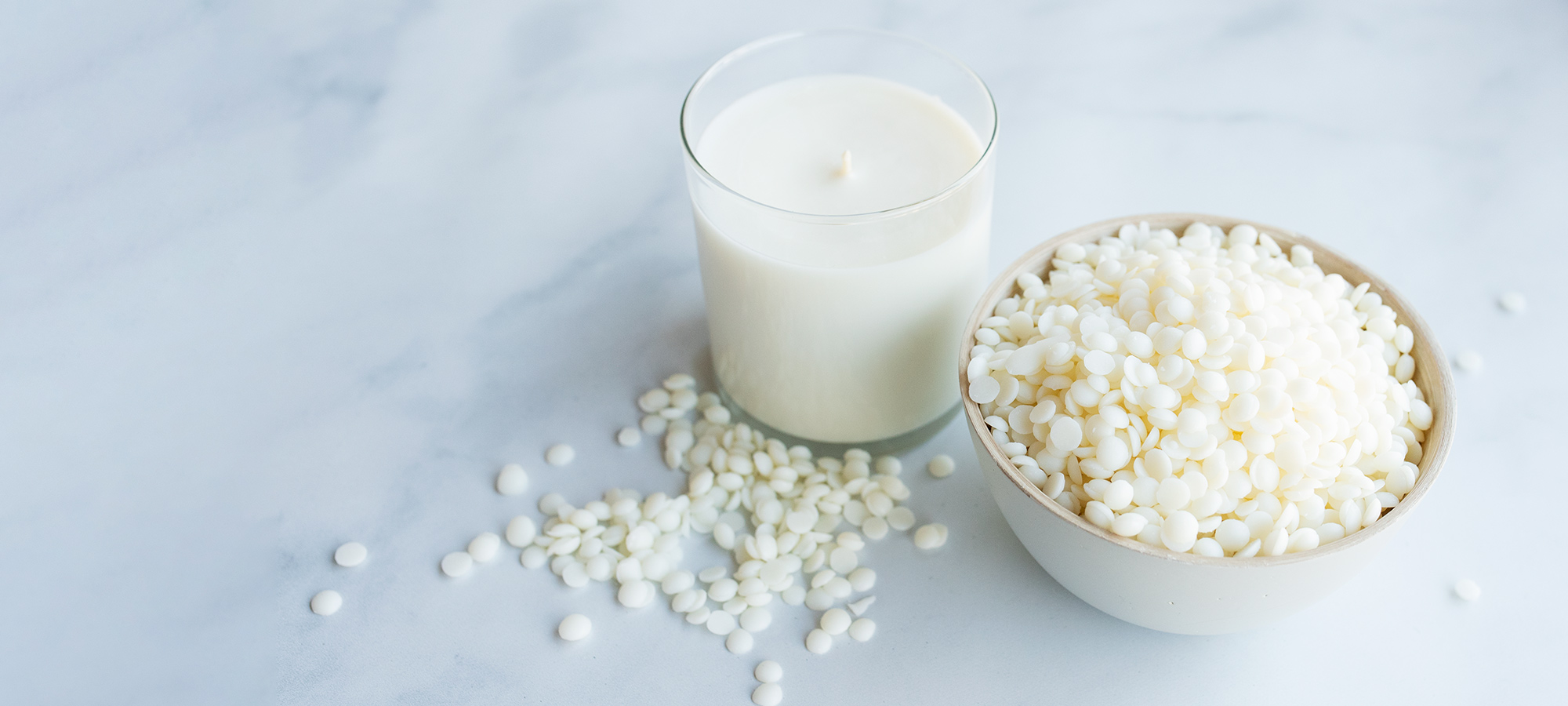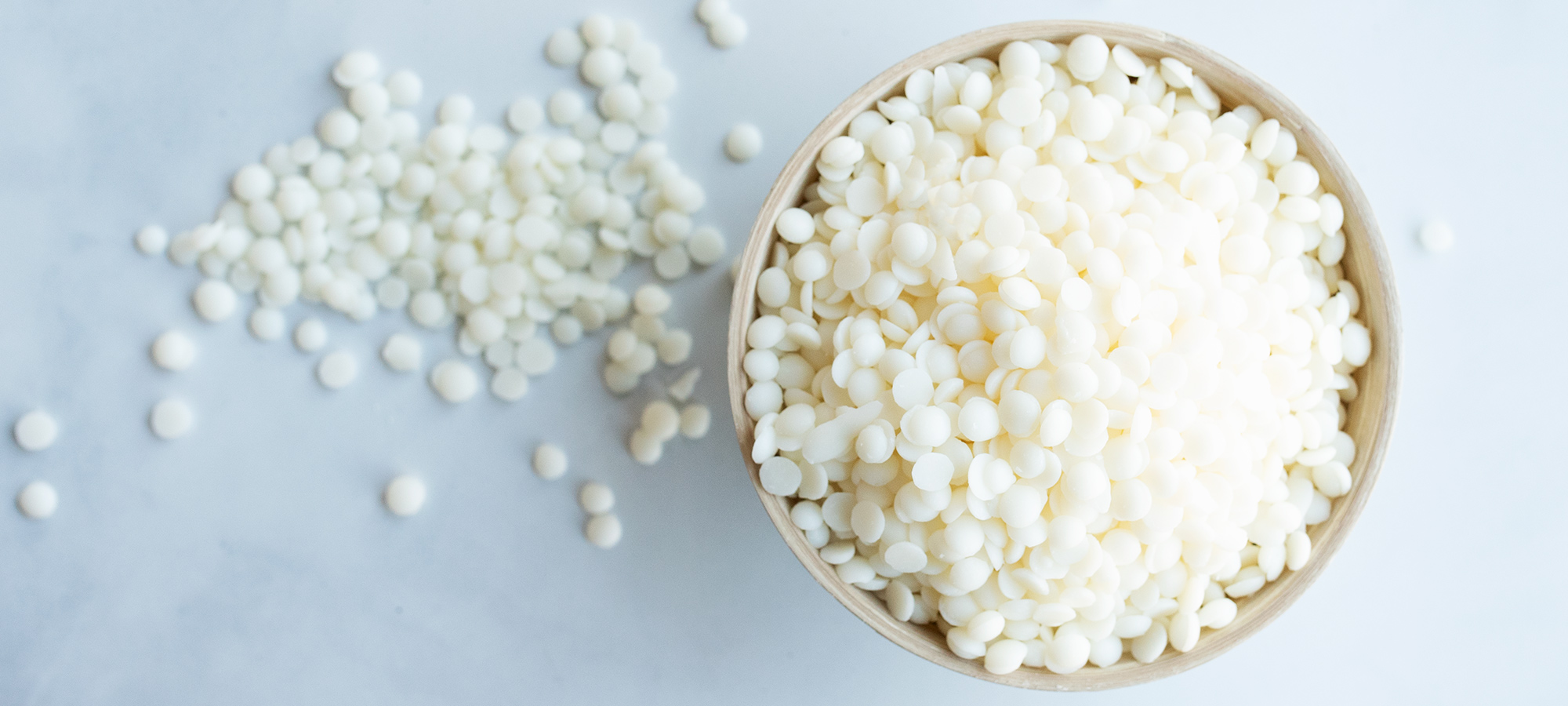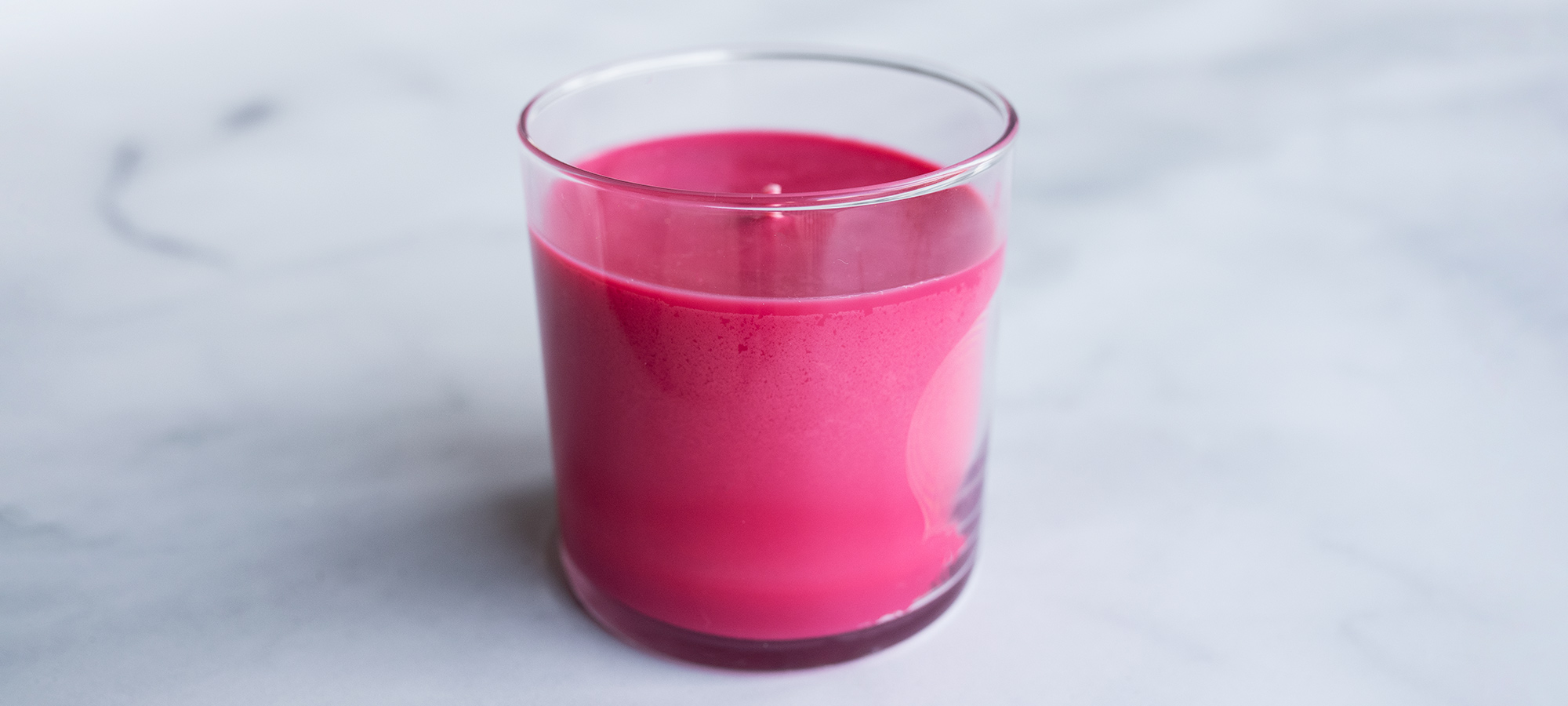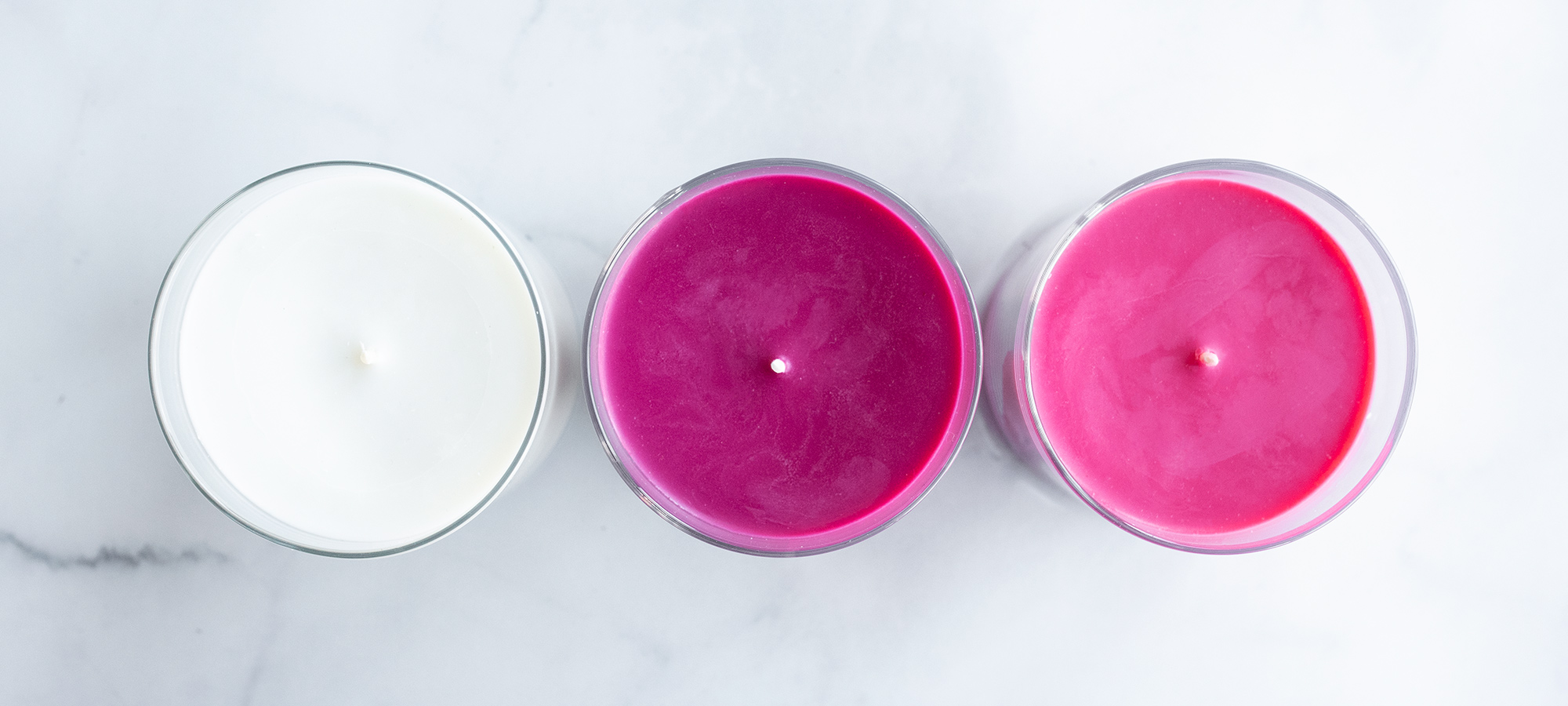LAB NOTES: EcoSoya CB-135 Soy Wax

Our testing process
We divided our testing into three parts:
- Aesthetics: We tested for shrinkage, mottling, and color retention
- Fragrance Performance: We looked at solubility, retention, and cold and hot throw performance.
- Burn Performance: We tested various LX wick sizes to find the best burn.
For the fragrance testing segments, we used White Tea, Cranberry Apple Marmalade, and Very Vanilla fragrance oils. They have very different densities, viscosities, and ingredients. We hoped the variation would reveal potential solubility and burn issues.
General overview
Application: Container candles and tealights
Recommended Fragrance Load: 6-10%
EcoSoya CB-135 was one of the first soy waxes that CandleScience offered. NGI chose to completely discontinue this wax when they lost their manufacturing facility in 2017. Kerax brought this formula back and has done a great job recreating the original formula. While the previous version was considered a cosmetic grade in the US, Kerax will not be able to make this same claim.
This wax comes in pastilles, which makes it easy to handle and measure. This is the recommended wax if you previously used the Quantum series waxes (Q210 or Q220) previously offered by NGI.
Note: These are sold in metric units of 5kg bags, which is roughly 11lbs, and 20kg cases, which is roughly 44lbs.

Aesthetics
Surface and glass adhesion
We tried pour temperatures between 135ºF and 160º F (57.2°C and 71.1°C). All temperatures produced smooth, even tops. Our temperatures at 150°F (65.6°C) and higher had severe adhesion problems. We poured the remainder of our testers at 135ºF (57.2°C) and had much better glass adhesion although there were still some small areas, mostly toward the bottom of the containers. After burning the candles, we found the wax was set back fairly smooth but not perfectly.
Frosting
We checked for signs of frosting 24 hours after pouring, a week after, and again at 30 days. We saw signs of frosting after 24 hours. The frosting did slowly extend over the 30 day evaluation period. We also checked for signs of frosting after our wick testing. We did find the wax frosted quite heavily in the area where the melt pool formed.

Coloring
We tested our red and magenta liquid dye at a usage rate of 6 drops per pound (454 g) of wax. The liquid dye easily mixed in at 185ºF (85°C). The red produced a typical medium shade. The magenta produced a nice deep color. We did find the darker the color the more the wax frosted and spread faster than lighter colors. Because of this wax’s tendency to frost we recommend using very light shades of color or no color. The natural wax has an off-white color.

Note: The fragrance oil and dye can greatly affect the amount of frosting.
Fragrance performance
Solubility
We added fragrance to the melted wax at 185ºF (85°C). The fragrance incorporated easily, and we didn’t see signs of separation. We tested Cranberry Apple Marmalade from 6% to 12% in all applications and we also tested Very Vanilla at 9% and 12% without any issues. There were also no signs of sweating in any of our finished candles. Even though we found the wax could hold up to 12% fragrance, we recommend using no more than 10% for best performance.
Hot and cold throw
We created test candles using White Tea, Cranberry Apple Marmalade, and Very Vanilla at 6%, 9%, and 12%. We checked for cold throw performance at 24 hours, one week, and two weeks. Initially, the cold throw was slightly weak for all our test candles. After one week we noticed an improved cold throw for candles at 6%. We rated them 3 out of 3 on our soy wax scale. The candles made with 9% were much stronger and more in line with what we hoped for the cold throw would be at 6%.
At the two-week point, we began our burn tests. The hot throw of each fragrance at 6% was a little weak (a 2 out of 3). Fragrances at 9% were stronger, a solid 3 out of 3. The candles we made at 12% had problems burning properly and did not have a stronger hot throw. For best results, we recommend using a fragrance load of 9% to 10% and allowing your candles to cure for at least two weeks.
Burn performance
Wicking
We started our wick testing with our previous recommendations for CB-135 and found the LX wicks still performed perfectly in this wax. As always, test your fragrance and color combinations to get the best results.